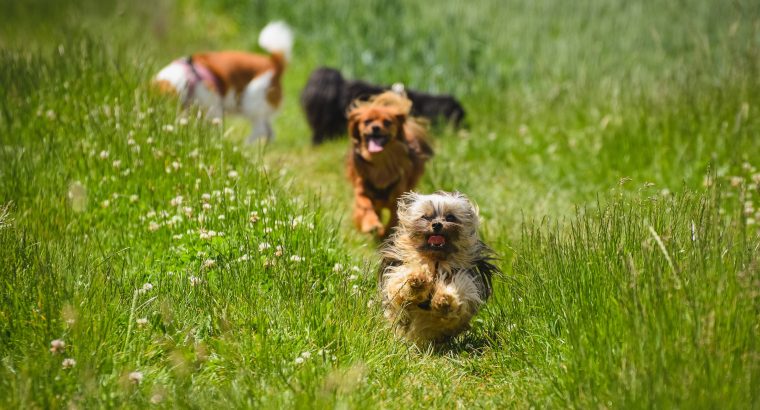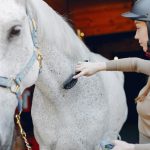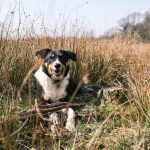Top Dog Breeds in Australia and Their Exercise Needs
Australia is a country that loves its dogs, and there are countless breeds that have become popular companions for families and individuals alike. Each breed is unique, with varying needs for exercise, mental stimulation, and physical activity. In this article, we will take an in-depth look at the top dog breeds in Australia and their exercise needs to help you make an informed decision when choosing the perfect furry companion.
10 Top Dog Breeds in Australia and Their Exercise Needs
1. Cavoodle
The Cavoodle, a delightful and charming crossbreed, is the result of breeding a Cavalier King Charles Spaniel with a Miniature or Toy Poodle. Known for its affectionate nature, intelligence and hypoallergenic coat, the Cavoodle has gained popularity as a family pet and companion for individuals with allergies. This endearing breed combines the gentle temperament of the Cavalier with the Poodle’s intelligence and low-shedding coat, making the Cavoodle an ideal choice for those seeking a loving, low-maintenance and adaptable furry friend.
Exercise needs: Cavoodles are typically low to medium energy dogs that don’t require too much exercise. They can get most of the exercising done indoors, needing only around 20 to 30 minutes of outdoor play to stay healthy and stimulated.
2. Labrador Retriever
Labrador Retrievers are the most popular dog breed in Australia, known for their intelligence, friendliness, and loyalty. They have a strong desire to please, making them excellent family pets and service dogs.
Exercise needs: Labrador Retrievers are energetic dogs that require a significant amount of exercise. They benefit from at least one hour of physical activity daily, which could include walking, jogging, swimming or playing fetch. Mental stimulation is equally important, so be sure to incorporate obedience training, puzzle toys and scent work into their routine.
3. Staffordshire Bull Terrier
Staffordshire Bull Terriers, affectionately known as Staffies, are renowned for their affectionate nature and muscular build. They have a reputation for being courageous and tenacious, making them excellent watchdogs and family pets.
Exercise needs: Staffies require at least 30-45 minutes of exercise per day, including brisk walks, jogging, or playtime. To maintain their muscular build and prevent boredom, incorporate activities like tug-of-war, agility training and obedience exercises.
4. Border Collie
Border Collies are intelligent, energetic and agile dogs originally bred for herding sheep. They are known for their ability to learn quickly, making them excellent working dogs and family pets.
Exercise needs: Border Collies have high energy levels and require at least one to two hours of daily exercise, including running, swimming or playing fetch. These dogs are ideal for taking on long walking tours around Sydney or Melbourne. Mental stimulation is crucial for this breed, so incorporate puzzle toys, trick training and herding activities to keep them engaged and satisfied.
5. Golden Retriever
Golden Retrievers are one of the most beloved dog breeds globally, known for their friendly, gentle nature and high intelligence. They make excellent family pets, therapy dogs and service animals.
Exercise needs: Golden Retrievers require at least one hour of daily exercise, including walking, running or swimming. To maintain their healthy weight and prevent boredom, incorporate mentally stimulating activities such as obedience training, puzzle toys, and scent work.
6. German Shepherd
German Shepherds are a versatile breed, known for their intelligence, loyalty, and protective nature. They are often employed as police dogs, search and rescue dogs, and service animals, but also make great family pets.
Exercise needs: German Shepherds require at least one to two hours of daily exercise to maintain their physical and mental well-being. Activities could include walking, running, hiking or playing fetch. Mental stimulation is essential, so be sure to include obedience training, agility work and puzzle toys in their routine.
7. French Bulldog
French Bulldogs, or “Frenchies,” are small, muscular dogs with a distinctive “bat-like” ear shape. They are known for their playful, affectionate nature and adapt well to apartment living.
Exercise needs: French Bulldogs have lower exercise requirements than many other breeds, needing around 20–30 minutes of daily activity, such as a brisk walk or indoor playtime. They are prone to overheating, so avoid exercising them during the hottest parts of the day and monitor them closely during physical activity.
8. Australian Cattle Dog
The Australian Cattle Dog, also known as the Blue Heeler or Red Heeler, is a hardy, intelligent breed developed in Australia for herding cattle. They are known for their loyalty, alertness and strong work ethic, making them excellent working dogs and active family companions.
Exercise needs: Australian Cattle Dogs have high energy levels and require at least one to two hours of daily exercise to maintain their physical and mental well-being. Activities could include walking, running, hiking or playing fetch. Due to their herding instincts, engaging in activities like agility training, obedience work and herding exercises can provide essential mental stimulation.
9. Cavalier King Charles Spaniel
Cavalier King Charles Spaniels are small, affectionate dogs known for their friendly nature and beautiful, flowing coat. They adapt well to various living situations and make excellent family pets and therapy dogs.
Exercise needs: Cavaliers require a moderate amount of exercise, with at least 30–45 minutes of daily activity, such as walks or playtime in the yard. They also enjoy engaging in activities like agility training and obedience work to keep them mentally stimulated.
10. Poodle
Poodles are intelligent, athletic dogs that come in three sizes: standard, miniature and toy. They are known for their curly, hypoallergenic coat and adapt well to various living situations.
Exercise needs: The exercise requirements for Poodles vary depending on their size. Standard Poodles need at least one hour of daily exercise, such as walking, running, or swimming. Miniature and Toy Poodles require at least 30-45 minutes of daily activity, including walks or indoor playtime. Poodles enjoy activities that challenge their intelligence, such as agility training, obedience work and puzzle toys.
11. Dachshund
Dachshunds, affectionately known as “sausage dogs” or “wiener dogs,” are small dogs with a distinctive long body and short legs. They were originally bred for hunting, but their charming personality and unique appearance have made them popular family pets.
Exercise needs: Dachshunds require at least 30 minutes of daily exercise, such as walks or indoor playtime. Be mindful of their long backs and avoid activities that may strain their spine, such as jumping from heights or climbing stairs. Mental stimulation is essential for this breed, so incorporate activities like scent work, puzzle toys and obedience training.
Hailing from the rugged landscapes of the American West, despite their name, Australian Shepherds are lively and agile dogs that are practically brimming with energy. Bred for their intelligence and herding prowess, these dogs require ample exercise to keep them physically fit and mentally stimulated. They’re not the type to be content with a short walk around the block; these vibrant canines thrive on active engagement and a good challenge.
Exercise for an Australian Shepherd isn’t merely a luxury, it’s a necessity. These dogs excel in activities that put their agility and intellect to work, such as fetch, frisbee, agility courses, and even herding trials if you have the space and resources. Regular hikes are also an excellent way to burn off their abundant energy while satisfying their innate curiosity. However, it’s not just about physical exertion. Mental stimulation is crucial too, so incorporating training sessions or interactive toys into their exercise routine can keep your Aussie Shepherd’s mind sharp. Remember, a well-exercised Australian Shepherd is not only a healthier dog, but also a happier and more content companion
Conclusion
The top dog breeds in Australia each have their own unique exercise requirements and needs for mental stimulation. It is essential to research and understand these needs before selecting a furry companion to ensure a healthy, happy life together. By providing your dog with the appropriate exercise and activities, you will not only help them maintain their physical and mental well-being but also strengthen the bond between you and your furry friend.







